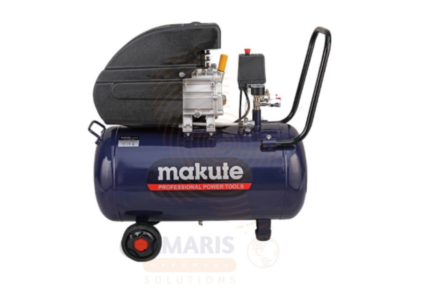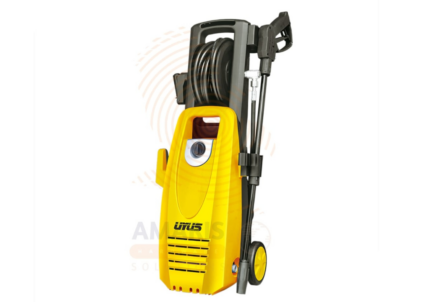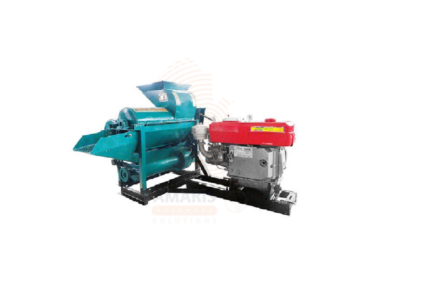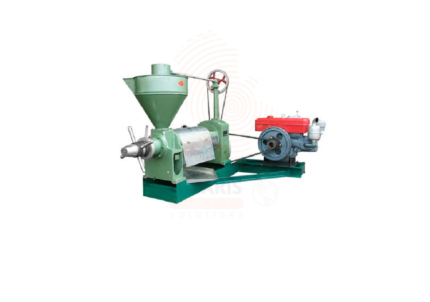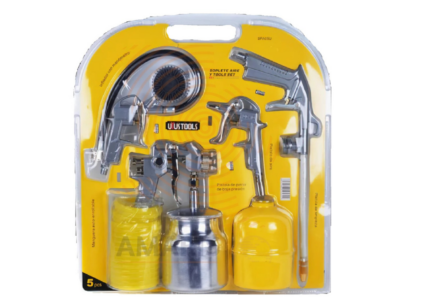Back to products


Universal Socket Wrench
$21.15 Original price was: $21.15.$20.09Current price is: $20.09.
Oil Pot
WhatsApp Order
PRODUCT DESCRIPTION
In hardware or machinery, an “oil pot” could potentially be a container designed for holding lubricating oil. The purpose of such a container would be to facilitate the application of oil to various components to reduce friction and wear, ensuring smooth operation and longevity of the hardware.
Description
USES OF AN OIL POT
- Machinery Lubrication: Oil pots are often used in industrial settings to apply lubricating oil to various mechanical components of machinery. This helps reduce friction, wear, and heat generation, thereby extending the life of the equipment.
- Automotive Maintenance: In automotive applications, oil pots or oil cans are used for applying oil to specific parts of an engine or other moving components. This ensures proper lubrication and helps prevent excessive wear and tear.
- Precision Equipment: Oil pots are commonly used in situations where precision lubrication is required, such as in the maintenance of precision instruments, clocks, or other delicate machinery.
- Metalworking: In metalworking processes, an oil pot may be used to apply cutting or cooling oil to tools and workpieces during machining operations. This helps in reducing friction and dissipating heat generated during the metal-cutting process.
- Railroad Maintenance: In the past, oil pots were used for lubricating the moving parts of train wheels and tracks. While modern rail systems often use automated lubrication systems, oil pots were historically employed for this purpose.
- Antique and Vintage Items: Oil pots were more commonly used in the past for various household and mechanical applications. They are sometimes collected as antique items or used in restoration projects.
SAFETY HANDLING PRECAUTIONS
SAFETY MEASURES AND PRECAUTIONS
- Choose the Right Oil:
- Use the recommended type of oil for your specific application and equipment.
- Ensure that the oil is compatible with the materials in your machinery.
- Proper Storage:
- Store oil in a cool, well-ventilated area away from heat sources, flames, or direct sunlight.
- Keep oil containers tightly sealed to prevent spills and contamination.
- Personal Protective Equipment (PPE):
- Wear appropriate personal protective equipment, including safety glasses or goggles, gloves, and any other gear recommended for handling oils.
- Ventilation:
- Work in well-ventilated areas to minimize inhalation of oil vapors.
- Avoid using oil pots in confined spaces without proper ventilation.
- Avoid Open Flames and Sparks:
- Keep oil pots away from open flames, sparks, and hot surfaces.
- Ensure that there are no sources of ignition in the vicinity when using oil.
- Secure Work Area:
- Maintain a clean and organized work area to prevent slips, trips, and falls.
- Wipe up any oil spills immediately to avoid slippery surfaces.
- Appropriate Containers:
- Use containers and oil pots specifically designed for handling oils to prevent leaks and spills.
- Ensure that the containers are in good condition without any cracks or damage.
- Handle with Care:
- Handle the oil pot with care to prevent accidental spills or leaks.
- Use a funnel or other appropriate tools when transferring oil to minimize the risk of splashing.
- Emergency Preparedness:
- Know the location of emergency equipment, such as fire extinguishers, and how to use them.
- Have a clear understanding of emergency procedures in case of spills or accidents.
- Regular Maintenance:
- Inspect oil pots regularly for any signs of damage or wear.
- Replace damaged or worn parts promptly.
- Training:
- Ensure that individuals using oil pots are properly trained in handling oils, understanding safety protocols, and using the equipment correctly.
- Dispose of Waste Properly:
- Dispose of used oil and oil-soaked materials according to local regulations and guidelines.
Related products
Direct Drive Air Compressor
A direct drive air compressor is a type of air compressor where the motor is directly connected to the compressor pump, typically without the use of belts or gears. In this configuration, the motor and the pump share a common shaft, resulting in a more compact and efficient design. Direct drive compressors are known for their simplicity, reduced maintenance requirements, and higher power transmission efficiency compared to belt-driven or gear-driven counterparts. They are commonly used in various applications, including powering pneumatic tools, inflating tires, and providing compressed air for industrial processes.
German Type Grease Gun
PRODUCT DESCRIPTION
A "German type grease gun" typically refers to a type of grease gun that is of German origin or follows a design influenced by German engineering. A grease gun is a handheld tool used in automotive and industrial settings to apply lubricating grease to machinery or equipment. The term "German type" may indicate that the grease gun follows design principles, specifications, or standards commonly associated with German engineering. German engineering is often associated with precision, durability, and high-quality manufacturing. Therefore, a German type grease gun may be expected to exhibit these characteristics. It's worth noting that specific details about a "German type grease gun" may vary, and the term may be used loosely to refer to any grease gun with characteristics reminiscent of German design principles.
Grinding Stone Kit
PRODUCT DESCRIPTION
A Grinding Stone Kit is an essential set of abrasive stones used for sharpening, grinding, and smoothing metal, glass, and other hard materials. These stones come in various shapes and grits to accommodate different tasks, from fine finishing to heavy material removal. Ideal for use with rotary tools, grinders, or by hand, the kit is perfect for professionals and hobbyists alike, ensuring precision and efficiency in metalworking, tool maintenance, and craft projects.
High pressure washer
A High pressure washer, rated at 2000 watts, is a powerful cleaning device designed for various applications, such as cleaning surfaces, vehicles, outdoor spaces, and more. The "2000W" indicates the power consumption or wattage of the washer, suggesting a robust motor that can generate high water pressure for effective cleaning. This type of pressure washer is likely to deliver strong water jets, making it suitable for tackling tough dirt, grime, and stains in residential or industrial settings. The versatility and efficiency of a 2000W high-pressure washer make it a popular choice for tasks that demand substantial cleaning power.
Maize Sheller
A Maize Sheller is a mechanical device designed to remove kernels from maize cobs efficiently and with minimal kernel damage. It significantly reduces the time and labor required for traditional shelling methods, making it ideal for agricultural operations, farms, and food processing units. Shellers are available in manual, electric, and diesel-powered variants, and are often constructed from heavy-duty metal for durability in demanding environments. Their consistent shelling capacity improves productivity, reduces post-harvest losses, and ensures cleaner grain output ready for storage or milling.
Oil Expeller
An Oil Expeller is a mechanical device used to extract oil from oil-bearing seeds and nuts through a process of high-pressure mechanical pressing. It typically consists of a screw shaft, pressing chamber, and power system (manual, electric, or engine-driven), and is widely used in small-scale farms, local oil mills, and commercial processing units. Capable of handling materials like sunflower seeds, groundnuts, soybeans, mustard, coconut, and sesame, oil expellers are available in both cold press and hot press variants. This machine enables efficient, chemical-free oil extraction, producing unrefined oil and residual seed cake for further use.
Spray Gun & Air Tool Accessory Kit Set
A Spray Gun & Air Tool Accessory Kit Set typically refers to a package or bundle that includes five essential components or accessories designed to complement and enhance the functionality of spray guns and air tools. These kits are commonly used in various applications, such as automotive painting, woodworking, and other projects where spray painting or air-powered tools are employed. The specific contents of the kit may vary, but it often includes items such as different nozzle attachments, connectors, air hoses, and other accessories necessary for optimal performance and versatility with spray guns and air tools. The aim is to provide users with a comprehensive set of tools and accessories to meet their diverse needs in a convenient and cost-effective manner.
Stone Crusher
A stone crusher is a heavy-duty machine designed to reduce large rocks into smaller stones, gravel, or rock dust for use in construction, road building, and other aggregate applications. These machines use mechanical force to break down stone material, typically through compression or impact. Stone crushers come in various types such as jaw crushers, cone crushers, impact crushers, and hammer crushers, each suited to specific crushing requirements. They are widely used in mining, quarrying, construction, and recycling industries to produce consistent aggregate sizes for foundations, concrete, asphalt, and more.


 Acrylic Sealants
Acrylic Sealants Construction Adhesives
Construction Adhesives Double-Sided Tape
Double-Sided Tape Duct Tape
Duct Tape Electrical Tape
Electrical Tape Epoxy & Resins
Epoxy & Resins Masking Tape
Masking Tape
 Automotive Wrenches & Socket Sets
Automotive Wrenches & Socket Sets Battery Chargers & Jump Starters
Battery Chargers & Jump Starters Car Jacks & Stands
Car Jacks & Stands Car Wash & Detailing Products
Car Wash & Detailing Products Diagnostic Tools
Diagnostic Tools Tire Inflators
Tire Inflators Vehicle Lighting
Vehicle Lighting Oil & Lubricants
Oil & Lubricants
 Adhesives & Sealants
Adhesives & Sealants Bricks & Blocks
Bricks & Blocks Cement & Concrete
Cement & Concrete Drywall & Plaster
Drywall & Plaster Flooring (Tiles, Wood, Laminate)
Flooring (Tiles, Wood, Laminate) Lumber & Plywood
Lumber & Plywood Paints, Primers & Coatings
Paints, Primers & Coatings Insulation Materials
Insulation Materials Roofing Materials
Roofing Materials
 Circuit Breakers
Circuit Breakers Electrical Cables & Wires
Electrical Cables & Wires Switches & Sockets
Switches & Sockets Fuses & Relays
Fuses & Relays Connectors & Terminals
Connectors & Terminals Electrical Boxes & Panels
Electrical Boxes & Panels Conduit & Fittings
Conduit & Fittings Lighting Fixtures & Bulbs
Lighting Fixtures & Bulbs Extension Cords & Power Strips
Extension Cords & Power Strips
 Anchors
Anchors Bolts
Bolts Clips & Clamps
Clips & Clamps Screws
Screws Nuts
Nuts Washers
Washers Rivets
Rivets Nails
Nails Threaded Rods
Threaded Rods
 Hammers
Hammers Measuring Tools (Tapes, Levels, Calipers)
Measuring Tools (Tapes, Levels, Calipers) Screwdrivers
Screwdrivers Pliers & Cutters
Pliers & Cutters Saws & Blades
Saws & Blades Chisels & Punches
Chisels & Punches Allen Keys & Hex Keys
Allen Keys & Hex Keys Ratchets & Socket Sets
Ratchets & Socket Sets Wrenches & Spanners
Wrenches & Spanners
 Power Tool Accessories (Blades, Bits, Discs)
Power Tool Accessories (Blades, Bits, Discs) Rotary Tools
Rotary Tools Saws (Circular, Jigsaw, Reciprocating)
Saws (Circular, Jigsaw, Reciprocating) Drills & Drivers
Drills & Drivers Grinders & Sanders
Grinders & Sanders Heat Guns
Heat Guns Nail Guns
Nail Guns Impact Wrenches
Impact Wrenches Batteries & Chargers
Batteries & Chargers
 Pipes & Fittings (PVC, Copper, PEX)
Pipes & Fittings (PVC, Copper, PEX) Plumbing Tools
Plumbing Tools Pumps & Motors
Pumps & Motors Sealants & Adhesives for Plumbing
Sealants & Adhesives for Plumbing Valves & Taps
Valves & Taps Water Heaters
Water Heaters Drainage Systems
Drainage Systems Faucets & Fixtures
Faucets & Fixtures Hoses & Tubing
Hoses & Tubing
 Hinges & Latches
Hinges & Latches Hooks & Brackets
Hooks & Brackets Window Hardware
Window Hardware Chains & Cables
Chains & Cables Casters & Wheels
Casters & Wheels Shelving & Storage Systems
Shelving & Storage Systems Door Handles & Locks
Door Handles & Locks Drawer Slides & Cabinet Hardware
Drawer Slides & Cabinet Hardware
 Personal Protective Equipment (PPE)
Personal Protective Equipment (PPE) Respirators & Masks
Respirators & Masks Safety Glasses
Safety Glasses Safes
Safes Security Cameras
Security Cameras Gloves
Gloves Helmets
Helmets Ear Protection
Ear Protection Fire Safety Equipment
Fire Safety Equipment Locks & Padlocks
Locks & Padlocks Motion Sensors & Alarms
Motion Sensors & Alarms
 Garden Fencing
Garden Fencing Garden Furniture Hardware
Garden Furniture Hardware Lawn Mowers
Lawn Mowers Trimmers & Edgers
Trimmers & Edgers Shovels & Spades
Shovels & Spades Rakes & Hoes
Rakes & Hoes Pruning Shears & Loppers
Pruning Shears & Loppers Watering Systems (Hoses, Sprinklers, Nozzles)
Watering Systems (Hoses, Sprinklers, Nozzles)
 Interior Paints
Interior Paints Paint Brushes & Rollers
Paint Brushes & Rollers Paint Strippers & Thinners
Paint Strippers & Thinners Paint Trays & Accessories
Paint Trays & Accessories Exterior Paints
Exterior Paints Spray Paints
Spray Paints Primers & Undercoats
Primers & Undercoats Varnishes & Stains
Varnishes & Stains
 Gaskets & Seals
Gaskets & Seals Hydraulic Fittings
Hydraulic Fittings Industrial Fasteners
Industrial Fasteners Industrial Hoses
Industrial Hoses Lubricants & Greases
Lubricants & Greases Metal Sheets & Bars
Metal Sheets & Bars Bearings & Bushings
Bearings & Bushings Belts & Pulleys
Belts & Pulleys
 HVAC Filters
HVAC Filters Insulation for HVAC
Insulation for HVAC Air Conditioners
Air Conditioners Refrigerants
Refrigerants Ventilation Ducts & Fittings
Ventilation Ducts & Fittings Thermostats & Controllers
Thermostats & Controllers Fans & Blowers
Fans & Blowers
 Pegboards & Hooks
Pegboards & Hooks Shelving Units
Shelving Units Storage Bins & Containers
Storage Bins & Containers Toolboxes & Tool Chests
Toolboxes & Tool Chests Workbenches
Workbenches Drawer Organizers
Drawer Organizers Labeling Supplies
Labeling Supplies
 Welding Accessories (Clamps, Brushes)
Welding Accessories (Clamps, Brushes) Welding Electrodes & Rods
Welding Electrodes & Rods Welding Helmets & Gloves
Welding Helmets & Gloves Welding Machines
Welding Machines Soldering Irons & Stations
Soldering Irons & Stations Flux & Solder Wire
Flux & Solder Wire
 Generator Accessories
Generator Accessories Inverters
Inverters Portable Generators
Portable Generators Power Inverters
Power Inverters Transfer Switches
Transfer Switches Diesel & Gasoline Generators
Diesel & Gasoline Generators
 Transport Equipment: Carts, Dollies, and Hand Trucks
Transport Equipment: Carts, Dollies, and Hand Trucks Storage Solutions: Pallets, Racks, and Containers
Storage Solutions: Pallets, Racks, and Containers Lifting Equipment: Hoists, Cranes, and Jacks
Lifting Equipment: Hoists, Cranes, and Jacks Conveyors and Accessories: Belts and Rollers
Conveyors and Accessories: Belts and Rollers

